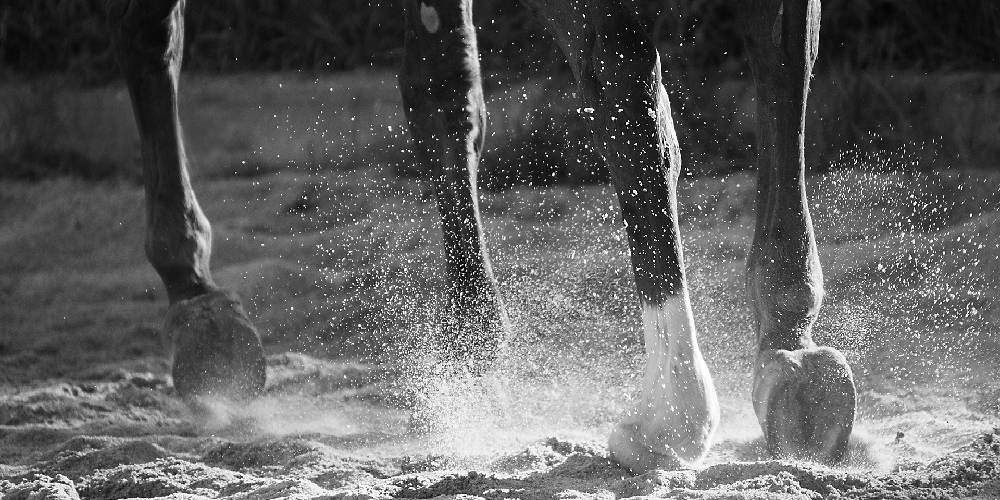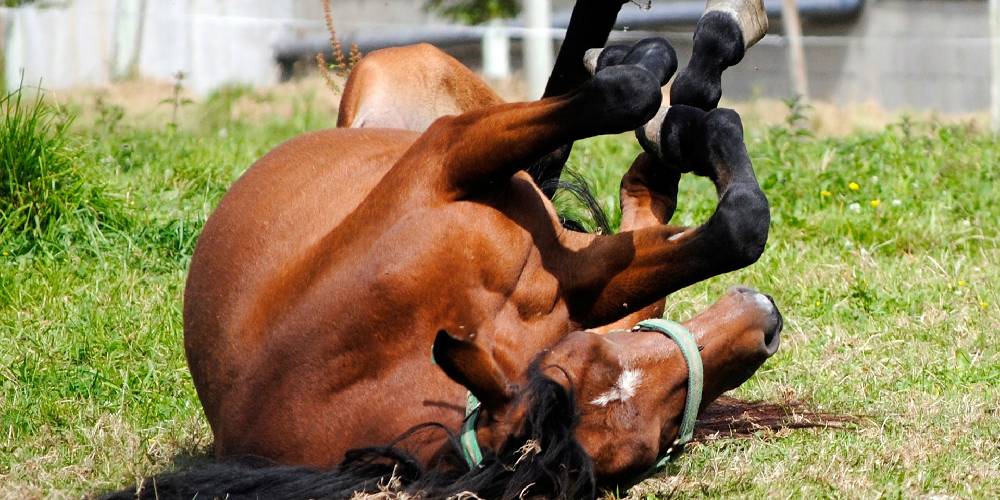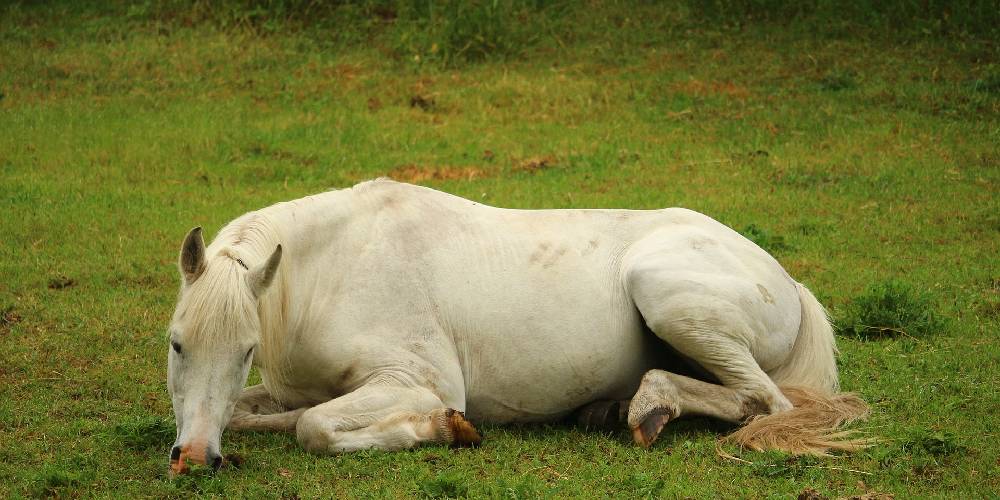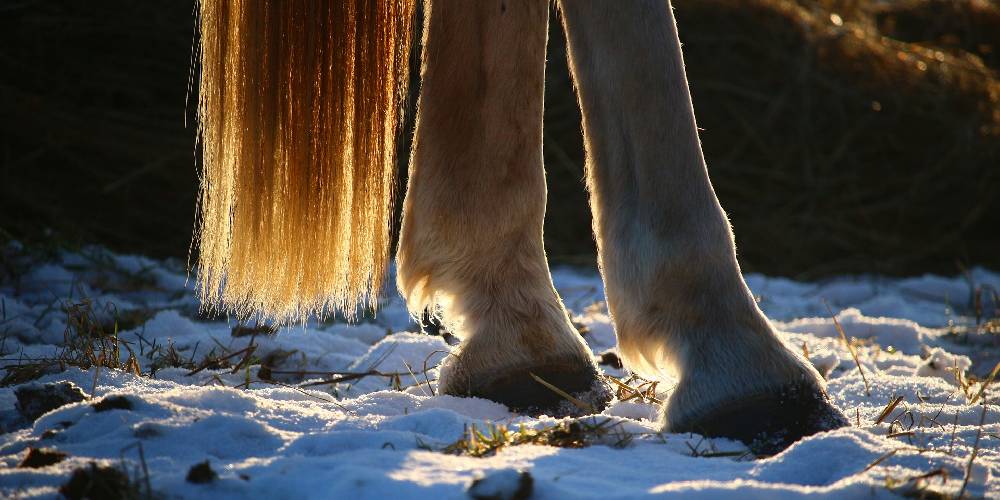Horses are almost immediately put down after breaking a limb, but why? Why can’t horses just get their leg put in a plaster cast as people do? Are there any survivors of broken limbs in the horse world? I have wondered all the same things, but once hearing different stories from different people and documentaries describing the experience and why the horse was euthanized, I began to understand why.
Why Are They Put Down After Breaking A Leg?
Horses are put down after breaking a limb for several reasons. One of these reasons is that the horse is in excruciating pain. Horses usually have a very low pain tolerance so keeping a horse alive under these circumstances is extremely painful for the horse. Another reason is that even if the horse does survive, they will be lame and likely never have a riding career again. Another common reason is that if the horse is kept alive, the horse must stand on just three legs which will increase the risk of laminitis in the healthy limbs. Overall, horses are put down if one of their legs is broken because of ethical reasons. A horse with a broken limb is, and likely will be in pain for a long time if not for the rest of their life, so putting them out of their misery is the most common choice by horse owners dealing with this situation.
Can A Horse Be Kept Alive Even If They Have A Broken Leg?

Of course. Even with a broken leg, horses are kept alive though it isn’t always recommended. Horses kept alive often don’t heal, suffer a lot of pain, and deteriorate in health rapidly in areas outside the broken limb itself. One reason for this is that the horse will not be able to exercise, stretch their legs, or move as they naturally would. Another reason is that their other legs are holding the rest of the horse’s body weight, especially the front legs (or leg if one front leg is broken), causing foot and soundness issues in other parts of the body.
What Side Effects Can Horses Suffer From Being Kept Alive With A Broke Bone?

Keeping a horse alive is usually frowned upon of they are suffering with a broken leg. The main reason for this is the number of severe side affects that come with keeping them around. Some of these side affects are extremely painful and severe and may cause the horse to pass away from these additional ailments. Some side affects resulting in keeping a horse alive with a broken limb are:
Laminitis
The most common side effect of keeping a horse alive with a broken leg is something known as laminitis. (I actually wrote an entire article all about laminitis. To learn more about it click here!)
Laminitis is an issue with the hoof that involves swelling of the protective lamina. The protective lamina of the hoof is in front of an important bone in the hoof known as the coffin bone. The coffin bone is the main hoof bone of a horse’s foot. If the lamina swells, it pushes on the coffin bone causing extreme pain. In some cases, the lamina will even push the coffin bone so much that it causes it to rotate and point down. In this case, the bone will then begin to press through the hoof and in severe situations, begin to protrude from the bottom of the hoof.
This is caused through the numerous doses of pain medication, the lack of exercise, and the increased weight put on all the other limbs.
Colic
Colic is an issue seen in horses for a number of reasons. The way that it can be tied back to a broken limb is the excessive number of pain medications these horses will be given. Because these horses will also be lying down for a majority of the time, their stomach, intestines, and the entire gastrointestinal tract will be put under severe pressure and might make it difficult for food, gas, and waste to pass through. Because of this restriction, gas colic is a common ailment of these horses.
Issues Standing & Lying Down
Horses need all four legs to stand and lie down. With one or more legs broken, horses will find getting up and down really difficult. Having one or more legs out of commission, horses might need assistance in standing and lowering themselves as doing it themselves is nearly impossible.
Tissue & Organ Damage
Horses are not meant to lie down for extended amounts of time, let alone months upon months of time. When a horse lies down, a lot of pressure is put on their organs and tissue. If a horse is lying down for extended periods of time, the pressure can end up severely damaging the horse’s vital organs. This can happen because of restricted blood flow, restricted intestines, and other forms of blockage caused by this pressure.
Restricted Blood Flow
I’m sure we have all experienced our ‘leg falling asleep’ or something similar. This is actually caused by loss of blood flow to the limb or area of the body where this happens. This exact same thing can happen to horses if they are lying down for extended amounts of time due to a severe injury such as a broken leg. Restricted blood flow means poor bodily function and organ performance which in turn can be deadly for the horse.
Breathing & Lung Issues
Lying in a certain position can make it hard to breathe. This goes for a horse as well. Horses with broken legs will spend a majority of their recovery time lying down which puts a lot of pressure on their lungs. Because it is harder to breathe lying down, horses will become short of breath and find difficulty breathing as they are in an unnatural position.
Muscle Atrophy
This is a HUGE problem when dealing with horses, especially competition horses, that have a broken leg. Because they are not able to get out, move, or exercise, these horses will suffer from something known as muscle atrophy. This is where the muscle almost collapses and wastes away because the horse is no longer actively engaging or using the muscle. The body will break down the muscle and use the proteins in other areas of the body. The result is a physically weakened horse that will struggle even more with recovery, standing, and surviving their circumstances.
Infections
Infections are a common ailment of horses suffering from a fracture known as a compound fracture. This means that the horse broke its bone and it is now protruding out of the skin. When this happens, there is an opening where dirt, bacteria, and germs can enter the site of the injury and cause infections at the site of the break. In this case, not only is there a severe break, but there is also a severe and dangerous infection to contend with making it even harder to treat and care for the injured animal
Bed Sores
Bedsores are caused from horses lying down in the same place continuously, or if a certain part of their body is constantly rubbing on the ground. Bedsores are painful for horses and can be seen on their hips, sides, elbows, hocks, pasterns and fetlocks. Bedsores are also known to get infected giving the horse another thing to try to fight off.
Re-Breaking The Bone
Horses re-breaking their fractures is known to happen and has been seen in a number of horses. One of these horses was the famous racehorse Barbaro. He broke his leg during a race and his owners tried to do everything they could to save him. After one of his surgeries, he woke up and tried to run immediately. He hit his broken leg with one of his other legs causing the bone to re-fracture. This is an issue with horses waking up from surgery as their immediate response is to run. If they happen to hit one of their legs against the fractured one, they can easily rebreak the bone if they hit it hard enough.
Famous Horses Who Suffered & Eventually Were Euthanized From Bone Fractures

Barbaro
Barbaro, the horse I just mentioned above, was a horse used in Steeplechase racing (track racing with jumps). Sadly, in one of his races, Barbaro fractured one of his legs and was brought into surgery. Once he woke from his surgery, he tried to run while still lying down and hit one of his legs against the one that broke, causing the bone to re-fracture. He went through surgery again and this time, it was a success. During his time healing, Barbaro developed laminitis in his hooves caused by the increased pressure put on them. Though his original fracture healed nicely, the side affects from the healing process is what caused this famous racehorse to be euthanized on January 29, 2007.
Ruffian
Ruffian was a gorgeous dark bay filly who was a rising super star in the horse racing industry. This filly was competing in a highly anticipated match race against the Kentucky Derby winner Foolish Pleasure when she broke down. Ruffian shattered her two sesamoid bones in her right ankle. This filly woke up after surgery also trying to run like Barbaro did and injured her leg even further. At just three years old, Ruffian was euthanized July 7, 1975
Treatment Options For Broken Limbs

There are few treatment options for a horse with broken limbs. The main ones are surgery and amputation.
Surgery is the most popular treatment option for a horse who broke its leg. This is the procedure that both Ruffian and Barbaro went through to try to save their lives.
Amputation is another route that some horses will go through to try to save their lives. These horses are then fit with a prosthetic leg for them to use. Sometimes this can work, but in most cases, horses have a hard time adapting to their new limb and laminitis will settle into their remaining healthy limbs.
Are There Any Surviving Horses Who Suffered From Broken Limbs?

Yes, there are some survivors, but this is extremely rare. Most situations are comparable to that of Barbaro in the sense that the original fracture would heal, but the further complications claim the horse’s life. It is still seen as the most humane practice to euthanize a horse who has a broken leg.

